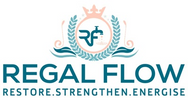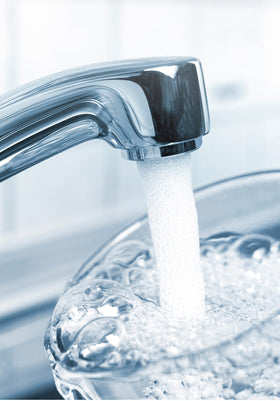
Are Water Dispensers Worth It? A Cost & Benefit Breakdown
Ever wrestled with a giant water bottle, only to spill half of it? Or waited ages for the kettle to boil? A water dispenser solves both! Short answer: Yes, they’re worth it—for convenience, savings, and less plastic waste. Our Comprehensive Guide to Countertop Water Dispensers reveals why they’re a game-changer!
Are Water Dispensers Worth the Money? A Practical Cost-Benefit Breakdown
Introduction: Evaluating the Cost and Benefits
Ever found yourself standing in front of the fridge, waiting for a bottle of water to cool down? Or sighing as you wait for the kettle to boil? A water dispenser could solve both problems—but is it really worth the money?
Short answer: Yes, if you want convenience, cost savings, and a greener lifestyle. But before you rush out to buy one, let’s break down the costs, benefits, and whether it’s the right investment for you.
Defining "Worth It": Personal Needs and Priorities
"Worth it" means different things to different people. If you're spending a fortune on bottled water or always in need of hot drinks, a dispenser could be a game-changer. But if tap water suits you fine, you might struggle to justify the cost.
At its core, this is about convenience, savings, and health benefits. Let’s see how it stacks up.
Initial Purchase Cost vs. Long-Term Value
Buying a dispenser is just the start. You’ve got filters, electricity, and possible water bottle refills to think about. But compare that to years of buying bottled water, and the savings start adding up.
Cost Analysis: Breaking Down the Expenses
Purchase Price of the Dispenser
Dispensers come in all shapes, sizes, and price points:
- Countertop models: £80–£150
- Freestanding units: £150–£400
- Plumbed-in systems: £300–£800+
Ongoing Costs (Filters, Bottles, Electricity)
Filter Replacement Costs
Filters improve water quality, but they need replacing:
- Basic carbon filters: £20–£40 (every 3–6 months)
- High-tech filters (UV, mineral): £50–£100 (yearly)
Bottled Water Delivery Costs
For bottled dispensers, ongoing costs include:
- 18L water bottle refills: £5–£10 each
- Monthly use estimate: £20–£50 (varies by household)
Electricity Consumption Costs
Most dispensers add £20–£50 a year to your energy bill. Energy-efficient models help reduce this.
Comparison with Alternatives (Bottled Water, Tap Water)
- Bottled water: Costly, wasteful, and inconvenient.
- Tap water: Free but may not taste great.
- Kettle & fridge storage: Works, but lacks instant convenience.
Benefits Analysis: Quantifying the Advantages
Convenience and Accessibility
Instant Hot and Cold Water
Need tea, coffee, or chilled water? No waiting, no hassle—just press a button.
Improved Water Quality
Filtered dispensers remove impurities, making tap water taste better and safer.
Health and Hydration Benefits
Easier access to clean water = more drinking, less dehydration. And that means fewer headaches, better digestion, and improved energy levels.
Environmental Impact (Reduced Plastic Waste)
A typical household uses over 350 plastic bottles a year. A dispenser can cut that to zero.
Space-Saving Design
Countertop models fit neatly into small kitchens, while sleek freestanding units keep things tidy.
Factors That Influence Value
Usage Frequency and Volume
- Families: Higher use means bigger savings.
- Individuals: Still useful if you drink a lot of water.
Type of Dispenser (Bottled, POU, Filtered)
- Bottled dispensers: Simple but ongoing costs.
- Plumbed-in (POU) models: Higher upfront cost, but cheaper in the long run.
- Filtered dispensers: Best for areas with poor tap water quality.
Water Quality in Your Area
If your tap water tastes off or has limescale issues, a dispenser with a filter can make a big difference.
Personal Preferences and Lifestyle
Love convenience? Hate plastic waste? Want great-tasting water? If yes, a dispenser makes sense.
Real-World Scenarios and ROI
Home Use: Families and Individuals
- Family of four: Can save £150–£300 a year by ditching bottled water.
- Busy professionals: Saves time on tea, coffee, and cold drinks.
Office Use: Employee Productivity and Satisfaction
- Hydrated employees = fewer fatigue complaints and better focus.
- Cost-effective: Cheaper than stocking up on bottled water.
Addressing Common Concerns
Maintenance Costs
Filters and cleaning kits cost £30–£100 a year, depending on the model.
Durability and Lifespan
A quality dispenser lasts 5–10 years with proper care, making it a long-term investment.
Conclusion: Making an Informed Decision Based on Your Needs
If you drink a lot of water, care about the environment, or just want instant hot and cold options, a dispenser is a solid investment. The upfront cost pays off over time, especially if you’re switching from bottled water.
Think about your needs, budget, and water usage. If convenience and savings matter to you, this might be the upgrade your home or office needs!



Leave a comment